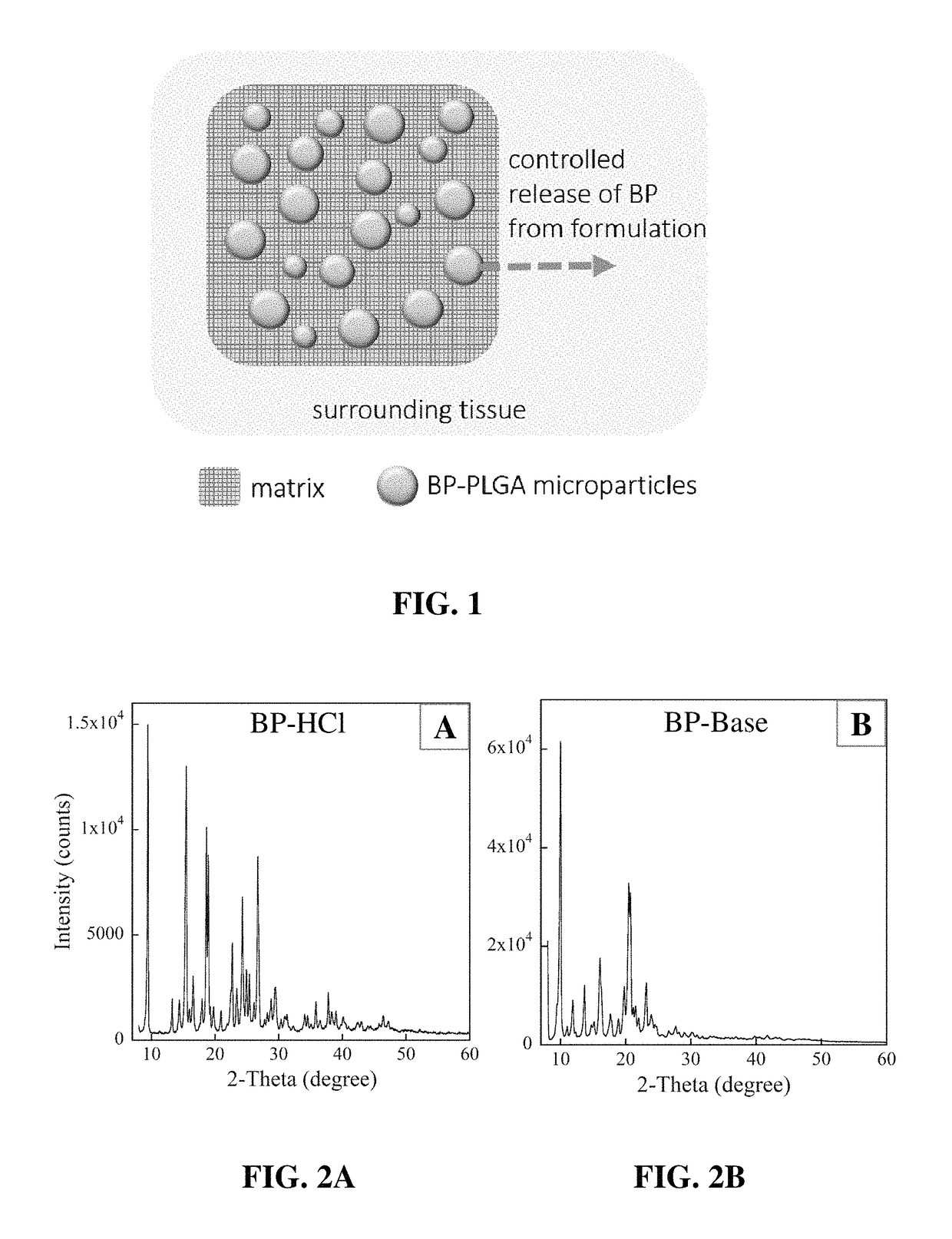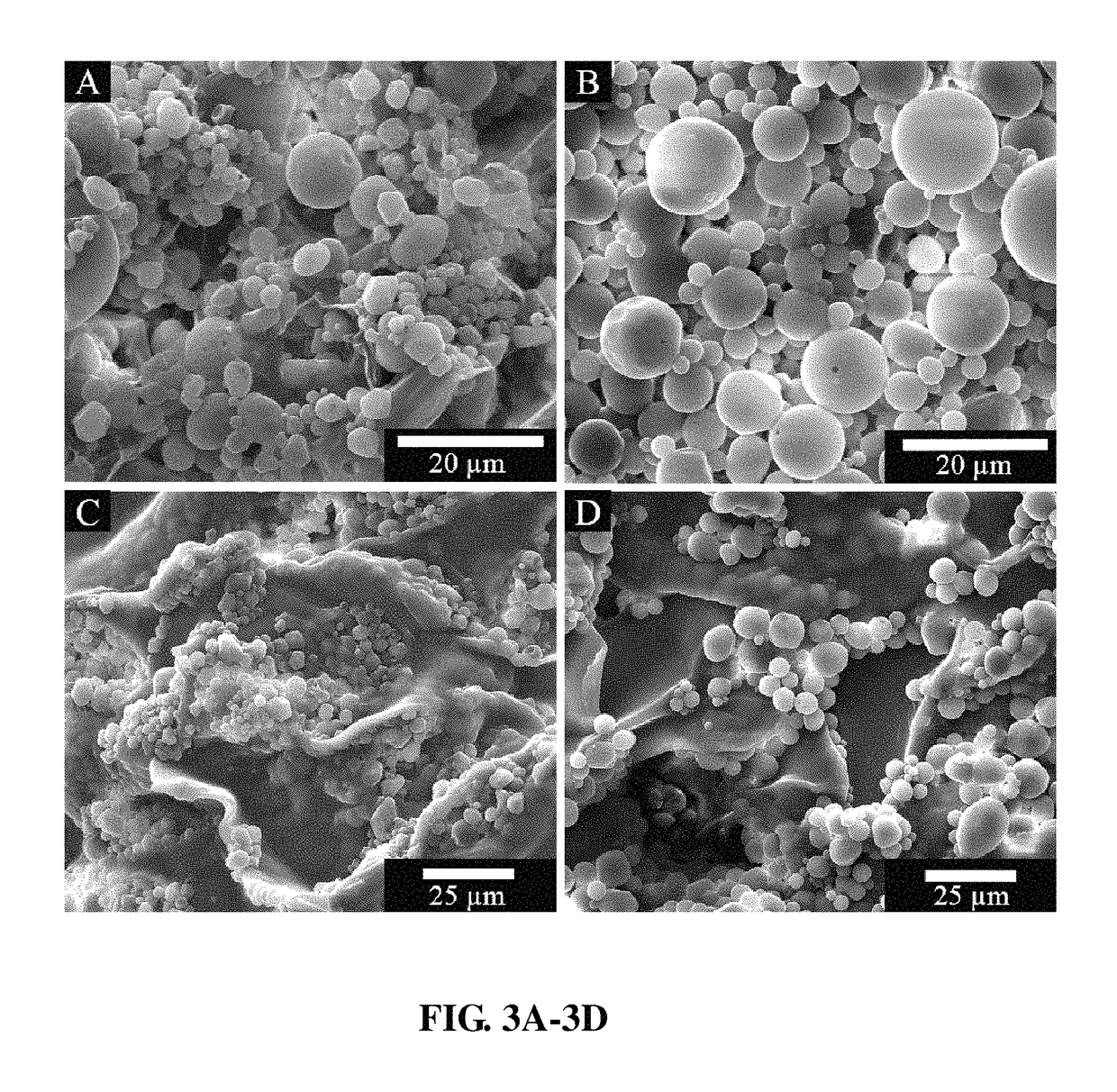Biocompatible dental putty formulations for controlled release of bupivacaine
a technology of bupivacaine and biocompatible dental paste, which is applied in the field of formulations, can solve the problems of short duration of efficacy, and reduced ability of the drug to interact with targeted nerve cells
- Summary
- Abstract
- Description
- Claims
- Application Information
AI Technical Summary
Benefits of technology
Problems solved by technology
Method used
Image
Examples
example 1
on of PLGA Microparticles Containing Bupivacaine
[0070]PLGA microparticles are prepared using a emulsion-solvent evaporation process. To enable dissolution of BP within methylene chloride for the solvent evaporation method bupivacaine hydrochloride monohydrate (Spectrum Chemical) was converted to the soluble base form. Briefly, 25 mL of a NaHCO−3 solution (2.6 grams in 50 mL of diH2O) was slowly added to a solution of 5 grams of BP-HCl in 150 mL of diH2O. After allowing the solution to stand for approximately 10 minutes, the bupivacaine-base (BP-base) was extracted with dichloromethane three times (150 mL each), and dried over MgSO4.
[0071]Solvent was then extracted via rotary evaporation and the resultant BP-base oil product was purified by precipitation and dried. Conversion results were verified via x-ray powder diffraction (XRD). The PLGA microparticles were prepared using an emulsion-solvent evaporation method.
[0072]In a typical procedure, a solution comprising (500 mg) of PLGA (...
example 2
Characterization of Formulation
[0082]In vitro release studies were performed using a dialysis method. Briefly, each sample was placed in dialysis tubing (Spectra / Por® Float-A-Lyzer®, cellulose ester, molecular weight cutoff of 8000-10,000) sealed, and incubated in physiological buffer (1×PBS, pH=7.2, Gibco) while being stirred at 37° C. For PLGA microparticle / matrix formulations, 40 mg of PLGA microparticles and 50 mg of Gelfoam® (Pfizer) were weighed into a small container and combined with 150 μL of diH2O. Once combined, all PLGA microparticle / matrix formulations contained a final salt concentration of 0.9 wt % NaCl. For samples without matrix, 40 mg of PLGA microparticles were directly suspended with 1 mL of 1×PBS. In both cases, the ratio of BP-PLGA microparticles to non-BP-PLGA microparticles (40 mg total of microparticles) was varied to achieve predicted dosing of BP (Table 1).
[0083]
TABLE 1Formulations for controlled release of BP*Targeted DosingMicroparticle Ratio(mg / kg / day)B...
PUM
| Property | Measurement | Unit |
|---|---|---|
| Fraction | aaaaa | aaaaa |
| Percent by mass | aaaaa | aaaaa |
| Time | aaaaa | aaaaa |
Abstract
Description
Claims
Application Information
 Login to View More
Login to View More - R&D
- Intellectual Property
- Life Sciences
- Materials
- Tech Scout
- Unparalleled Data Quality
- Higher Quality Content
- 60% Fewer Hallucinations
Browse by: Latest US Patents, China's latest patents, Technical Efficacy Thesaurus, Application Domain, Technology Topic, Popular Technical Reports.
© 2025 PatSnap. All rights reserved.Legal|Privacy policy|Modern Slavery Act Transparency Statement|Sitemap|About US| Contact US: help@patsnap.com



